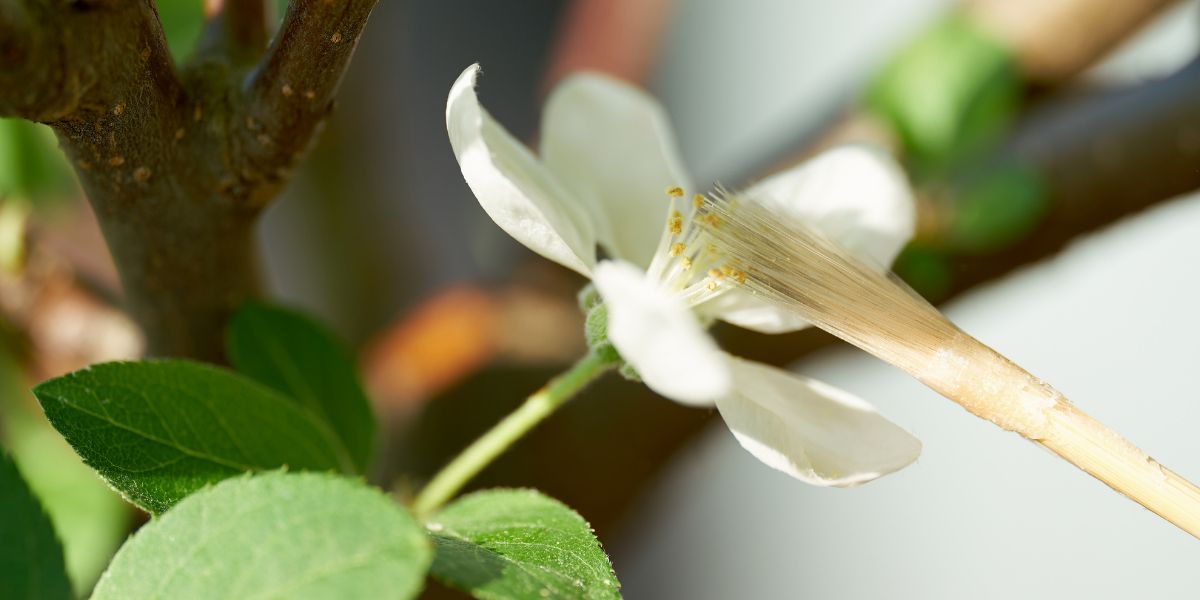How to Hand-Pollinate Chili Plants for Better Fruit Production

Chili peppers are prized by gardeners and food enthusiasts alike for their vibrant colors, unique flavors, and varying levels of heat. As a chili grower, you may be searching for ways to maximize your plants' fruit production and ensure a bountiful harvest. One technique to achieve this is through hand-pollination, a process that not only increases the yield of your chili plants but also allows you to create unique hybrid chili varieties.
Hand pollination is particularly useful for indoor chili growers who may not have access to natural pollinators, such as bees or other insects, and for those looking to control cross-pollination between different chili varieties. This manual intervention can significantly improve fruit production, ensuring that your chili plants reach their full potential.
Are you a chili pepper lover who wants to learn how to grow chili pepper plants at home? Look no further! Click below to find out which must-have books will guide you through the process of growing your own chili peppers...
In this article, we'll explore the process of hand-pollination, including the necessary tools and techniques, the benefits of hand-pollination for your chili plants, and how to save seeds from your hand-pollinated fruits. With this knowledge, you'll be well-equipped to increase your chili plants' fruit production and enjoy a more bountiful harvest.
Why Hand-Pollination Is Necessary
Although chili plants typically self-pollinate, certain conditions can lead to poor pollination, such as low humidity, inadequate air circulation, or lack of pollinators. Hand-pollinating can increase fruit production and make the most of your chili plant's lifespan. This is particularly useful for chili plants grown indoors, where pollinators like bees may not be present.
The Hand-Pollination Process
Before diving into the hand-pollination process, it's essential to understand the structure of chili flowers. A chili flower has both male and female reproductive organs: the stamen (male), which produces pollen, and the pistil (female), which contains the ovary.
Step 1: Choose the Right Time
Timing is crucial for successful hand-pollination. The best time to hand-pollinate is when the flowers are fully open, usually during mid-morning to early afternoon when humidity levels are lower. This is when the flowers release pollen more readily.
Step 2: Gather the Necessary Tools
To hand-pollinate your chili plants, you will need:
- A small, soft paintbrush or cotton swab
- A gentle hand to avoid damaging the flowers
Step 3: Hand-Pollinate the Flowers
Follow these steps to hand-pollinate your chili plants:
- Identify flowers that are fully open and have visible pollen on the stamen.
- Gently touch the tip of the paintbrush or cotton swab to the pollen-covered stamen to collect some pollen.
- Carefully transfer the pollen from the brush or swab to the pistil of the same flower or another flower on the same plant.
- Repeat this process for all open flowers on your chili plant.
Hand-pollination should be done every few days to ensure the best results. By following this process, you can significantly increase your chili plant's fruit production.
Additional Tips for Successful Hand-Pollination
Here are some additional tips to ensure the success of your hand-pollination efforts:
- Maintain optimal temperature and humidity levels for your chili plants to encourage flower production and successful pollination.
- Ensure proper air circulation in your growing area, especially for indoor chili plants, by using a fan or opening windows.
- Provide appropriate support for your chili plants, as well-nourished and well-supported plants are more likely to produce flowers and fruit.
- Choose easy-to-grow chili varieties if you're a beginner or have limited experience with hand pollination.
The Benefits of Hand-Pollination
Hand pollination has several benefits for chili growers:
- Improved fruit production: Hand-pollinating can increase the number of fruits your chili plants produce, leading to a more bountiful harvest.
- Controlled cross-pollination: Hand-pollination allows you to control cross-pollination between different chili varieties, creating unique hybrid peppers with specific desired traits.
- Indoor growing success: Indoor chili growers can still achieve successful pollination without the presence of natural pollinators like bees.
Saving Seeds from Hand-Pollinated Chili Plants
Once you've successfully hand-pollinated your chili plants and harvested the fruits, you may want to save seeds for future planting. Seeds from hand-pollinated plants have a higher chance of producing plants with traits similar to the parent plant.
To save seeds, follow these steps:
- Choose fully ripe chili peppers from your healthiest plants.
- Cut the peppers open and carefully remove the seeds.
- Rinse the seeds under cool water to remove any remaining pulp.
- Spread the seeds out on a paper towel or plate and allow them to dry for several days in a well-ventilated area, away from direct sunlight.
- Once the seeds are dry, store them in a cool, dark, and dry place in a labeled envelope or container.
Hand pollination is a valuable skill for chili growers looking to maximize their harvest and cultivate specific chili varieties.
By following the steps and tips outlined in this article, you can increase your chili plants' fruit production and enjoy a more abundant harvest.
Don't forget to check out our must-have books for more information on chili growing and cooking. Happy growing!



